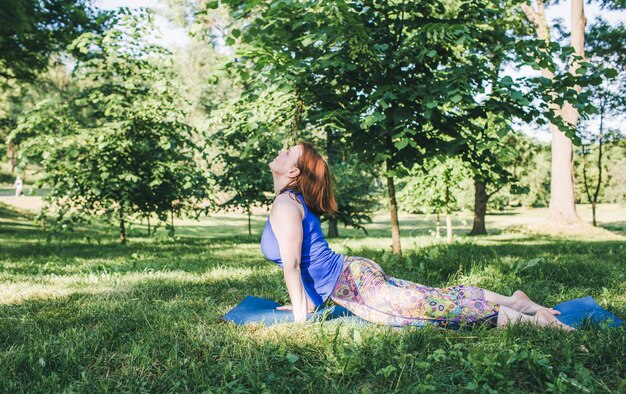Mindfulness: Your Practical Guide to Stress Reduction & Mental Health

Mindfulness serves as a potent tool in mitigating stress and bolstering mental well-being, offering practical techniques to enhance focus and emotional resilience.
In today’s fast-paced world, stress and mental health challenges are increasingly prevalent. The **role of mindfulness in reducing stress and improving mental health: a practical guide** offers a pathway to inner peace and enhanced well-being through simple yet effective techniques.
Understanding Mindfulness and Its Benefits
Mindfulness, at its core, is about paying attention to the present moment without judgment. This practice allows us to observe our thoughts and feelings as they arise, without getting carried away by them. Incorporating mindfulness into daily life can lead to numerous benefits, including reduced stress, improved focus, and enhanced emotional regulation.
What is Mindfulness?
Mindfulness is a mental state achieved by focusing one’s awareness on the present moment, while calmly acknowledging and accepting one’s feelings, thoughts, and bodily sensations. It involves being fully engaged with whatever you’re doing or experiencing, from the mundane to the profound.
Benefits of Mindfulness for Stress Reduction
One of the most significant benefits of mindfulness is its ability to reduce stress. By focusing on the present moment, we can avoid getting caught up in worries about the future or regrets about the past, both of which can contribute to stress and anxiety.
- Reduced Anxiety: Mindfulness practices help regulate the nervous system, reducing the physiological symptoms of anxiety.
- Lowered Blood Pressure: Studies have shown that regular mindfulness meditation can lead to lower blood pressure and reduced risk of heart disease.
- Improved Sleep: By calming the mind and body, mindfulness can promote better sleep quality and reduce insomnia.
Mindfulness isn’t just about stress reduction; it plays a crucial role in improving overall mental health. By cultivating a non-judgmental awareness of our thoughts and emotions, we can develop greater self-compassion and resilience.

Mindfulness Techniques: A Step-by-Step Guide
Mindfulness isn’t a one-size-fits-all practice. There are various techniques you can explore to find what resonates with you. From formal meditation to informal practices woven into your daily routine, the key is to start small and be consistent.
Basic Mindfulness Meditation
Mindfulness meditation involves sitting comfortably, focusing on your breath, and gently redirecting your attention back to your breath whenever your mind wanders. This simple practice can be a powerful tool for cultivating present moment awareness.
The beauty of mindfulness meditation is that it can be done anywhere, anytime. All you need is a quiet space and a few minutes to dedicate to yourself.
Body Scan Meditation
Body scan meditation involves systematically bringing awareness to different parts of your body, noticing any sensations without judgment. This practice can help you become more attuned to your physical sensations and release tension.
- Start with your toes: Bring your attention to your toes, noticing any sensations – tingling, warmth, or simply the feeling of your socks or shoes.
- Move up your body: Gradually move your attention up your body, from your feet to your legs, torso, arms, and head, pausing at each area to notice any sensations.
- Acknowledge and release: If you notice any tension or discomfort, simply acknowledge it and gently release it.
Mindful movement is another way to incorporate mindfulness into your daily life. Whether it’s yoga, tai chi, or simply taking a walk in nature, paying attention to your body’s movements can help you become more present and grounded.

Mindfulness in Daily Life: Practical Applications
Mindfulness isn’t just for formal meditation sessions; it can be woven into your daily life to enhance your awareness and reduce stress. By bringing mindful attention to everyday activities, you can transform mundane tasks into opportunities for presence and connection.
Mindful Eating
Mindful eating involves paying attention to the sensory experience of eating – the taste, texture, and aroma of your food – without judgment. This practice can help you savor your meals, prevent overeating, and develop a healthier relationship with food.
Start by taking a few deep breaths before you begin eating. Notice the colors and textures of your food, and appreciate the effort that went into preparing it.
Mindful Communication
Mindful communication involves paying attention to your words and tone, as well as listening attentively to others without interrupting or judging. This practice can improve your relationships and reduce conflict.
- Listen actively: Give the other person your full attention, without interrupting or preparing your response while they’re speaking.
- Speak with intention: Choose your words carefully and speak with kindness and clarity.
- Notice your reactions: Pay attention to your emotional reactions during the conversation and try to respond rather than react.
Mindful breathing is a simple yet powerful technique you can use throughout the day to reduce stress and increase focus. Take a few deep breaths whenever you feel overwhelmed, anxious, or distracted.
Overcoming Challenges in Mindfulness Practice
Mindfulness practice isn’t always easy. You may encounter challenges such as a wandering mind, uncomfortable emotions, or a lack of time. However, with patience and persistence, you can overcome these obstacles and deepen your practice.
Dealing with a Wandering Mind
It’s natural for your mind to wander during mindfulness practice. The key is to gently redirect your attention back to your chosen focus – your breath, your body, or your senses – without judgment.
Think of your mind as a puppy. It will naturally wander, but with gentle guidance, you can train it to stay by your side.
Working with Difficult Emotions
Mindfulness can bring up difficult emotions such as sadness, anger, or fear. It’s important to approach these emotions with compassion and acceptance, rather than trying to suppress or avoid them.
- Acknowledge the emotion: Name the emotion you’re feeling – “I’m feeling sad” or “I’m feeling angry.”
- Allow the emotion: Allow yourself to feel the emotion fully, without trying to push it away or change it.
- Offer yourself compassion: Treat yourself with the same kindness and understanding you would offer a friend who was going through a difficult time.
Remember that mindfulness is a journey, not a destination. There will be ups and downs along the way, but with consistent practice, you can cultivate greater peace, resilience, and well-being.
Mindfulness and Technology: Finding Balance
In today’s digital age, technology can be both a blessing and a curse. While technology can enhance our lives in many ways, it can also contribute to stress, distraction, and a sense of disconnection. Finding a healthy balance is essential for maintaining mental well-being.
Mindful Use of Technology
Mindful use of technology involves being intentional and aware of how you’re using technology, rather than mindlessly scrolling or multitasking. Set boundaries around your technology use and create time for offline activities.
Consider turning off notifications, deleting distracting apps, and designating tech-free zones in your home.
Using Technology for Mindfulness
Technology can also be used to support your mindfulness practice. There are many apps and online resources that offer guided meditations, mindfulness exercises, and relaxation techniques.
- Meditation apps: Apps like Headspace, Calm, and Insight Timer offer a variety of guided meditations for different purposes, such as stress reduction, sleep improvement, and focus enhancement.
- Online mindfulness courses: Websites like Coursera and Udemy offer online courses on mindfulness and meditation, taught by experienced instructors.
- Relaxation music: YouTube and Spotify offer a wide selection of relaxation music and nature sounds that can help you calm your mind and body.
Ultimately, the key is to use technology in a way that supports your well-being, rather than detracting from it. Be mindful of your habits and make conscious choices about how you spend your time online.
Sustaining Your Mindfulness Practice Long-Term
Sustaining a mindfulness practice long-term requires commitment, consistency, and self-compassion. It’s important to find ways to integrate mindfulness into your daily routine, track your progress, and seek support when needed.
Setting Realistic Goals
Start with small, realistic goals and gradually increase the intensity and duration of your practice over time. It’s better to practice for a few minutes each day than to try to do too much too soon and burn out.
Consider setting a daily reminder on your phone or calendar to prompt you to practice mindfulness.
- Join a mindfulness group: Practicing mindfulness with others can provide support, accountability, and inspiration.
- Work with a mindfulness teacher: A qualified mindfulness teacher can provide guidance and support as you deepen your practice.
- Read books and articles on mindfulness: Educating yourself about mindfulness can help you understand its principles and benefits, and inspire you to continue practicing.
Remember that mindfulness is a lifelong journey, not a quick fix. Be patient with yourself, celebrate your progress, and continue to explore and deepen your practice over time.
| Key Point | Brief Description |
|---|---|
| 🧘♀️ Mindfulness Definition | Paying attention to the present moment without judgment. |
| 😌 Stress Reduction | Focusing on the present reduces worries about the future and regrets about the past. |
| 🍎 Mindful Eating | Paying attention to the sensory experience of eating can prevent overeating. |
| 📱 Tech Balance | Being intentional about technology use to reduce stress and disconnection. |
Frequently Asked Questions (FAQ)
▼
Mindfulness is the practice of paying attention to the current moment, without judging it. It involves observing your thoughts and feelings as they arise, without getting carried away by them.
▼
Mindfulness helps reduce stress by focusing your attention on the present, rather than worrying about the future or dwelling on the past. This can help you calm your mind and body.
▼
No, meditation is one way to practice mindfulness, but you can also incorporate mindfulness into your daily activities, such as eating, walking, or communicating with others.
▼
It’s normal for your mind to wander during mindfulness practice. When this happens, gently redirect your attention back to your chosen focus without judging yourself.
▼
The more often you practice mindfulness, the more benefits you’ll experience. Aim to practice for a few minutes each day, and gradually increase the duration over time.
Conclusion
Incorporating mindfulness into your life can be a transformative journey towards reduced stress and improved mental health. By practicing present moment awareness and cultivating self-compassion, you can unlock inner peace and enhance your overall well-being. Start small, be consistent, and embrace the process with patience and curiosity.





